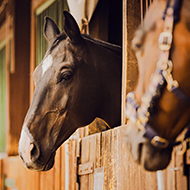The colour of dragonflies change with seasons, study finds
Darker dragonflies, like the small whiteface, are more likely to fly in cooler months.
A study of UK dragonflies has found that different colour dragonflies fly during warmer seasons than in cooler seasons.
The findings reveal that dragonflies with darker colours were more likely to fly during spring and autumn, while species of a lighter colour tend to fly in the summer.
Researchers say that this variation of which dragonflies are flying is an adaptation to regulate body temperature from solar radiation. Darker colours absorb heat better than lighter colours, and so darker species fly during the cooler months.
The study saw Prof Christian Hof, of the University of Wurzburg, and Dr Roberto Novella-Fernandez, of the Technical University of Munich, examine scientific observation data of UK dragonfly communities collected between 1990 and 2020.
Previous research had found that darker dragonfly species, such as the small whiteface, were more likely to fly in the cooler, northern regions. Meanwhile lighter dragonflies, like the keeled skimmer, would fly in the warmer southern regions.
The new findings prove that the average body brightness of dragonfly is not region specific, but also dependent on seasonal fluctuations of solar radiation.
Prof Christian Hof said: "What changes and adapts to solar radiation, so to speak, is the average colouration of all dragonflies flying at any one time."
However, the data has also suggested that climate change may be having an impact on the seasonal colour changes of flying dragonflies. This is despite global warming primarily affecting temperature and not solar radiation.
The researchers say that global warming could be creating a pattern that is unfavourable for dragonflies, as they are no longer flying during optimal solar radiation conditions.
Prof Hof added: "By relating changes in the characteristics of species, such as the colouration of insects, to environmental changes, we can better understand the causes of biodiversity loss.”
The full study can be found in journal Nature Communications.
Image © Shutterstock



 Zoetis has launched a new survey to identify management techniques for Equine Herpes Virus (EHV).
Zoetis has launched a new survey to identify management techniques for Equine Herpes Virus (EHV).